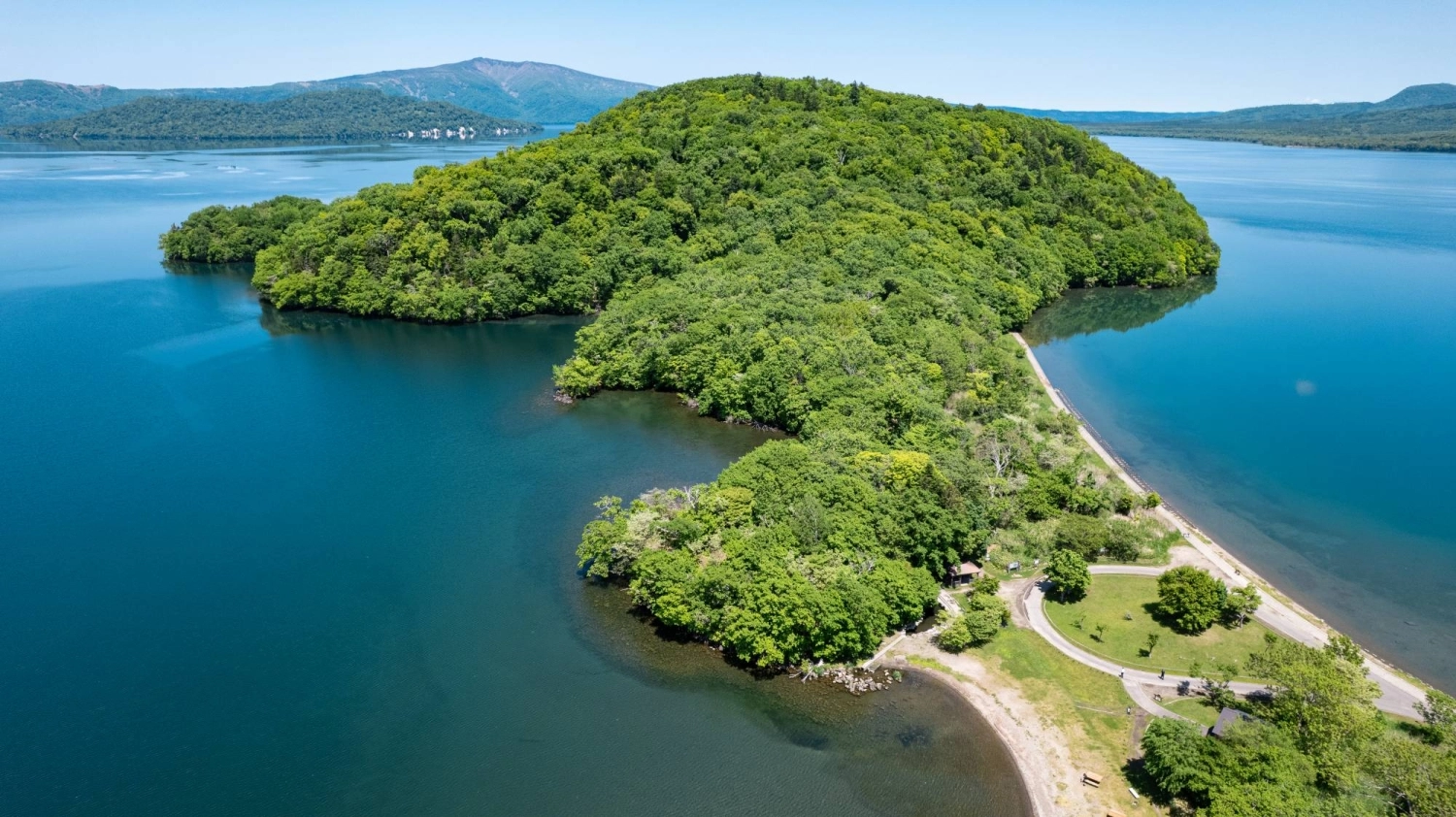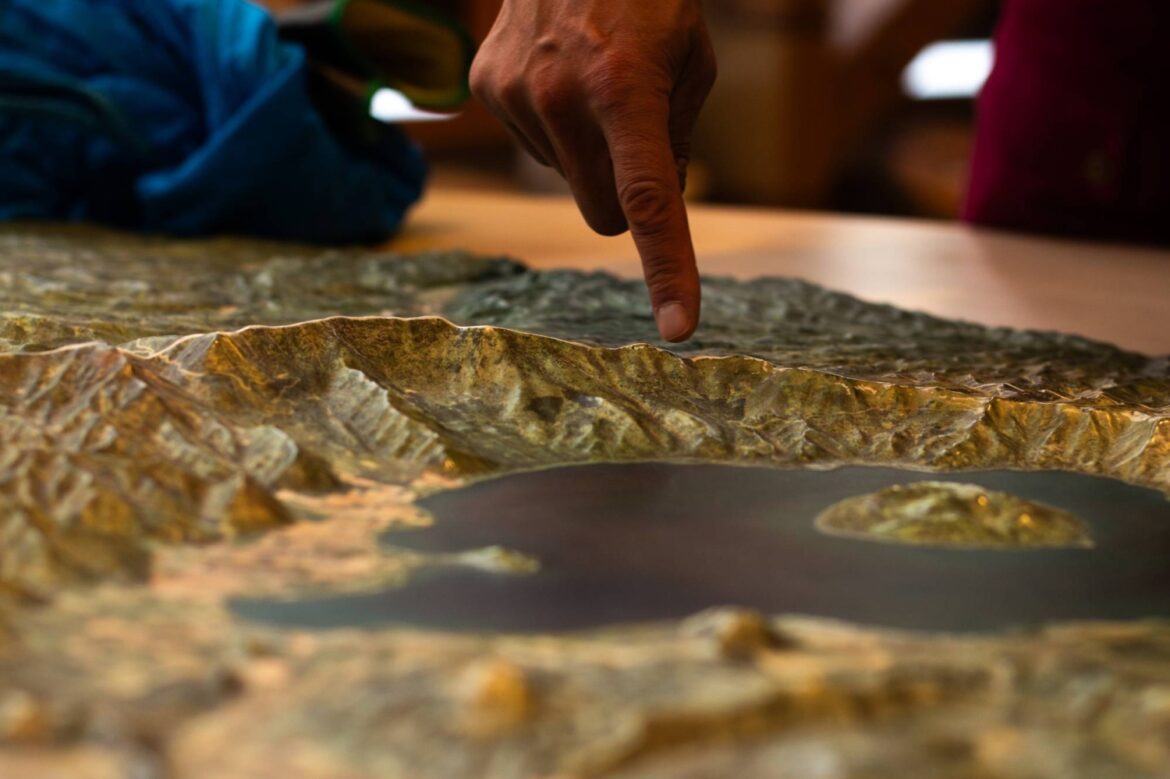Teshikaga, Hokkaido –
In the heart of eastern Hokkaido’s Akan-Mashu National Park, steam rises from a narrow river as it cuts through Kawayu Onsen, a hot spring town slowly fading into the forest.
Located just off the shore of Lake Kussharo and the caldera born from a volcanic explosion 30,000 years ago, Kawayu sits atop the same geothermal furnace still burning below, feeding the onsen (hot springs) that define the town. Standing 512 meters tall at the edge of town, Mount Io is famous for hissing liquid sulfur into the air, and its name in the Ainu language, Atosa-Nupuri (“naked mountain”), hints at the effect of this volcanic activity: Almost nothing grows here except Japanese stone pines, hunched and stubborn, their growth stunted by acidic soil and scorched rock.
The stone pines are a mirror of the town itself: Since its population peaked at over 13,000 in 1960 (according to figures from Kawayu’s wider municipality), the town stands half-abandoned with just 6,000 residents today, steam curling past the decay and silence settling where crowds once flowed.
Kawayu rose on the back of the sulfur mining industry in the early 1900s before pivoting to tourism with the creation of Akan-Mashu National Park in 1934. World War II stalled visions of a tourism paradise, but the postwar boom brought a second wind — inns filled, streets buzzed and the town hit its stride.

Kawayu Onsen is located just minutes away from Lake Kussharo, the largest caldera lake in Japan.
| JUSTIN RANDALL
By 1991, it saw a peak of over 564,000 annual overnight visitors. But like the twisted trees clinging to Mount Io’s toxic slopes, that growth proved fragile. As befell many small towns across Japan, the lost decades of the Heisei Era (1989-2018) crept in, and the town’s momentum drained away. Visitor numbers declined to 197,534 in 2008 and to 92,088 by 2018. If there were any hopes for recovery in the postpandemic years, those have been dashed, too, with annual visitors reaching just 66,000 as of 2022.
At its apex, Kawayu boasted 25 different onsen hotels, but now only four remain. In October 2025, Oyado Kinkiyu, one of the town’s largest remaining facilities famed for its spacious baths, is slated to close. Its parent company has chosen to focus on a newer luxury property across town, citing repair costs and damage from the highly acidic waters that define Kawayu’s appeal as factors against Kinkiyu’s continued upkeep.
“I always remember Kawayu as a lively place,” says Masataka Sato, a resident who asked to be identified by a pseudonym. “After I graduated from high school and returned to Teshikaga, lots of hotels were built, and the town was full of tourists. All of that changed after the bubble economy burst.”
“When compared to Akan or Utoro,” says Hioryuki Watanabe, another resident who also asked to appear via pseudonym, “Kawayu isn’t a place where young people want to work.”
Hot and cold
Kawayu’s hopes for a tourism resuscitation seemed destined for failure — until it caught the eye of one of Japan’s premier ryokan (traditional Japanese inn) operators.

Like much of eastern Hokkaido, Kawayu Onsen is full of natural beauty, but that hasn’t proved enough to keep tourists coming at the rate they used to.
| JUSTIN RANDALL
In 2023, Karuizawa, Nagano Prefecture-based Hoshino Resorts announced its intention to open an outpost of its Kai series of onsen-inspired hotels in Kawayu. In collaboration with Teshikaga, the municipality to which Kawayu belongs, and the Ministry of Environment, the town declared the new hotel situated within the grounds of Akan-Mashu would kickstart an ambitious journey toward a “world-class national park.”
Dubbed Kai Teshikaga, the hotel was to occupy land near Kawayu’s main intersection, from which guests could soak in the natural beauty of the town from an open onsen pool. Further development was also planned for various vendors and shops to line the river cutting through the town center — all slated to officially open by 2026.
Then, in April, news broke before any ground ever did that Hoshino intended to withdraw from the three-party agreement. In a statement, Hoshino’s public relations office offered the following explanation: “The approach proposed by Teshikaga Town had certain difficulties in resolving the issues, and although we continued to suggest solutions, discussions toward a resolution did not progress. As a result, it was a painful decision, but we were left with no choice but to express our intention to withdraw.”
To locals, the suspension of the project was a symptom of all stakeholders coming together.

Teshikaga locals and media listen to an official with the redevelopment project at the June town hall.
| JUSTIN RANDALL
“(The problem was) about creating a system that creates healthy collaboration between all parties involved,” Sato says. “There isn’t one in place.”
Local issues
But the story didn’t end there. After mediation by the Ministry of Environment, all parties agreed in early May to resume the previous arrangement and proceed with development — just weeks following Hoshino’s statement about pulling out.
On June 24, the difficulties in this project so closely tied to the future of Kawayu came to light during a town hall held in Kawayu Visitor Center. During the meeting, officials from Teshikaga, Hoshino Resorts and the Environment Ministry attempted to explain to the local residents the path forward.
More than 50 local residents sat quietly through speeches about what specific infrastructure renovations would be needed, lofty marketing goals and the amended timeline for the future. Between waving fans to beat the heat, residents scrawled notes in binders or tapped away at their phones to keep up with the deluge of information. During breaks, residents gathered outside to chat about the information they had heard.
In particular, a sticking point of Hoshino Resorts was the project’s perceived lack of outside experts.

At a town hall in June, respresentatives from Hoshino Resorts and the Japanese government tried to answer locals’ concerns about the progress of the redevelopment project.
| JUSTIN RANDALL
“I think it’s important to foster communication between both outside expertise and residents,” said Jun Tanaka, director of the Environment Ministry’s Akan-Mashu National Park Management Office.
Yoshiaki Ishi, a project manager for Hoshino Resorts, delivered a presentation regarding Hoshino’s standpoint on the future of the master plan that relied heavily on the company’s past experience in Nagato, Yamaguchi Prefecture. Ishi explained that the Kai Nagato property helped revitalize the surrounding onsen town via a public-private partnership, creating a new system to manage area promotion and tourism marketing while maximizing the staying power of the resort and conveying the local charm.
But in the context of Kawayu Onsen, what exactly does a world-class national park mean? When asked by residents, Ishi replied: “Quality of activities and accommodations being unique to the area while remaining at world-class standards.”
At the same time, Tanaka said that the three partners’ vision for Kawayu Onsen and the surrounding Akan-Mashu National Park was to one day be held in similar reverence to the North American parks of Yosemite, Banff or Yellowstone.
Once opened in 2028 — the new date officially announced at the June 24 town hall — the officials announced that they hope Kai Teshikaga will attract up to 25,000 visitors per year.
The meeting lasted long into the balmy Hokkaido summer day, with residents offering lengthy speeches on the confusion surrounding what it means to be a “world-class” national park, environmental impact and whether local taxes would be increased to fund the project.
“There’s a healthy amount of activities already in the Kawayu Area, and further investment into new tours might not be the best,” says Watanabe. “Finding ways to get guests to stay in Kawayu for more than one night to enjoy all it has to offer is crucial.”


AloJapan.com